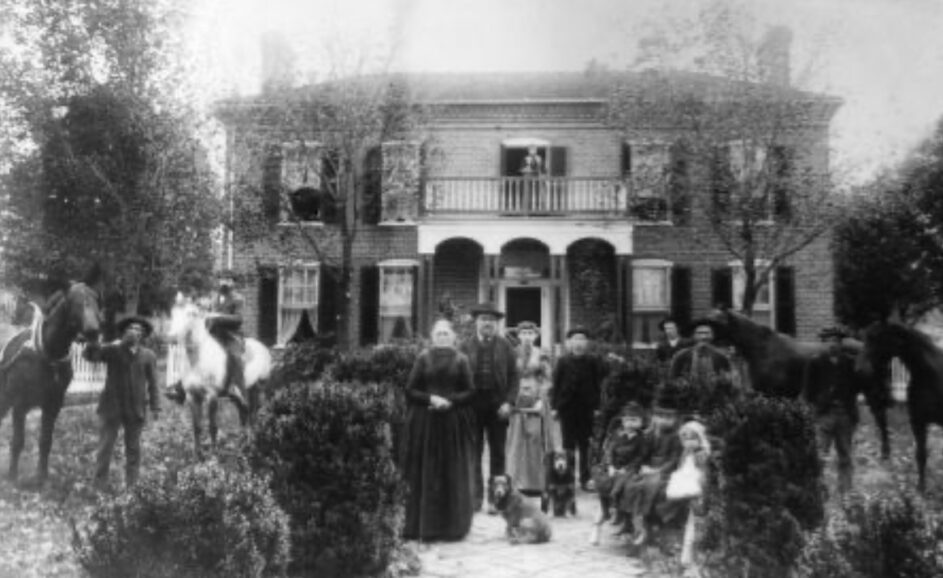“Grab the horses, get the dogs. Hell, even get the mule. Rustle up the kids, the grandchildren and get everybody out in the front yard. Tell Sissy to step out on the balcony. Now, everybody be REALLY still.”
I have no idea what was actually said that day, when a family was gathered in front of a federal style house deep in a bend of the French Broad River that is generally known as the Seven Islands neighborhood (no, not the state birding park, but near it). Though unidentified in the Thompson Collection photo in the McClung Historical Collection, the home is listed on the National Register of Historic Places as the LeRoy Keener House. The picture is estimated to have been made in the 1880s, and it is likely to be the family of Mr. Keener, who built the place in 1842 not long after his marriage to Mary Jane McCallie. His descendants remained on the land until it was sold in 1913, just a few years after his death in 1909.
The home has other names, Fairview, Keener-Hunt and Summer Haven. Leroy’s grandfather, Peter Keener, moved to Knox County from Lancaster County, Virginia, and his original two-story log cabin stood not far from Leroy’s on Seven Islands Road. LeRoy was born in an area known as Trundle Crossroads in Sevier County, basically where Old Sevierville Pike and Boyd’s Creek Highway intersect now.
Peter served in the Revolutionary War. His grave in Seven Islands Cemetery is adorned with a medal provided by the Bonnie Kate Chapter of the Daughters of the American Revolution that simply says “drummer from Virginia.” His wife, Susannah Lowe Keener, was also from Virginia. When exactly she and Peter made their way to East Tennessee wasn’t readily available, but it was likely to claim a land grant to pay Peter for his services in the war. But they were here in time for LeRoy’s father, Abraham, to be born in Knox County in 1796 just as Tennessee was becoming a state. LeRoy’s mother, Nancy Pitner Keener, was born in Virginia in 1800. Abraham was the second of nine children she bore between 1821 and 1842, all but one of which survived to adulthood.
LeRoy became a prosperous farmer, as evidenced by the fertile land he owned and the beautiful home he built, as well as being active in local politics. His wife was born in Sevier County, and they had seven children together. The Keeners 60th anniversary was feted in the local papers in August of 1906, which announced the grand party to be held at their home “about 15 miles from Knoxville.” A steamboat had been chartered to take Knoxville guests up the river at 6:30 in the morning for the day’s celebrations.
Mary Jane did not long survive that party. She died the following February and was buried at the relatively new Woodlawn Cemetery. Her husband would join her there two years later. LeRoy died in January of 1909. A charter member of the Riverdale Masonic Lodge, the newspapers noted the grandeur of the fraternity’s ceremonies once the Presbyterian minister was done. Most of Keener’s family is buried at Seven Islands and Woodlawn cemeteries.
Though listed on the National Register, the LeRoy Keener House is a private residence and not open to the public.
Beth Kinnane writes a history feature for KnoxTNToday.com. It’s published each Tuesday and is one of our best-read features.
Sources: Sources: Knoxville Journal and Knoxville News Sentinel Digital Archives, Knox County Library Digital Archives

